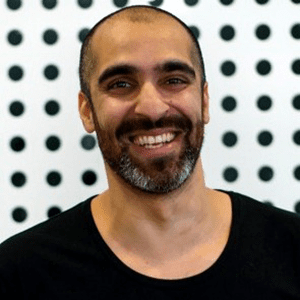

#14: Do you have the self-discipline to be really curious?
Mike Logan talks to Stephanie about the challenge for CEOs and Business Leaders to step back from having all the answers. Leaders need to get out of the content and coach their teams to ask the process questions, collectively the answer may result in a far better one.
Are you the manager who has all the answers? or Do you want to be the business leader who asks the right questions?
A problem well understood and well explored is a problem that’s mostly solved. The more perspectives you give a question then you will get an idea what the real problem is.
Examine the impacts of the problem and unexpected consequences of this problem. If we did solve that problem, how would we know and what does success look like?
What are our choices around what we could do? How do they meet the success measures?
This questioning technique creates deep engagement and accountability.
Listen to this podcast to find out more about Mike’s 5 step process.
Stephanie: Today my guest is Michael Logan. Mike is a seasoned rural leader from Narrabri Northern New South Wales with experience in executive and governance positions across various industries.
So after graduating from the first Australian rural leadership program intake in 1993, Mike completed an environmental program and convinced the entire cotton industry to develop a best practice management program, which is still going strong today. Various industries have benefited from Mike’s experience. He was the CEO of Dairy Connect and has served on the boards of numerous organisations including the Australian rural leadership foundation.
In 2019 Mike Logan was recognised in the Australian Honors List for services to primary industry through rural research and sustainable development in the fields of cotton, dairy and water conservation.
Mike is also a professional leadership mentor, coach and author, and now a published author with his first book, ‘The Asking Leader’. Mike describes the journey to become a professional Chairman and the processes he uses to run meetings, support CEOs in their businesses and their leadership challenges. Mike Logan, welcome to TEC Live. It’s great to have you here Mike. There’s a word that you use a lot and that word’s curious. You use it in your book, you use it in conversation with me. Where did the curiosity come from?
Mike: I really love the idea of curiosity as a way to learn. Really love the idea that you know, and a natural or sometimes unnatural habit to look deep more deeply into something comes from this need to understand and that comes from curiosity. You can be curious by reading. You can be curious by listening and in my circumstances, I’ve learned to become curious by asking.
Stephanie: The sense I get from you is that you’ve always been kind of curious, but you’ve become better at becoming curious by listening. Is that right?
Mike: Yeah. And it’s a real discipline. I described, do you have the self-discipline to be truly curious? So to be curious, you’ve actually got to sometimes make yourself be curious. You need a self-discipline that you can use to control you. Sort of a natural desire to give advice or natural desire to answer questions.
We can keep asking, we can keep searching and the more we understand, the better the end result will be. But sometimes time gets in our way. Sometimes we just want to solve the problem quickly?
Stephanie: Well, we’re so smart. When you’re the smartest person in the room, it’s very hard not to solve the problem yourself.
Mike: Well they call me the ‘CEO’, therefore I’m the one that makes most of the decisions, you get the heck outta here. I’m done.
Stephanie: Yeah, that’s good.
Mike: It’s a very strict discipline that CEOs have got to find some times to control that natural urge to resolve the problem.
Stephanie: Yeah, I like that. And we will get back to the discipline because you described quite a process for asking questions. So we’ll get back to that. But first of all, I want to take you back and I’m assuming the early nineties to your rural leadership program, is that right?
Mike: Yes it was, in 1993 we were the first intake of the Australian rural leadership program. I think there’s 27 intakes now. So we were accurately described as laboratory rats as they experimented on us
Stephanie: Right so they took you lab rats over to The Kimberley.
Mike: Yes they take all the courses to The Kimberley.
Stephanie: Right. When we were chatting about this before, I said, well we’ve already talked about someone, Will being lost in the snow. So let’s hear about you being lost in The Kimberley. So what happened then on that course? And I love the way you tell the story about Paul and how he really handled you guys. So tell us about what happened.
Mike: Well quickly there’s about six or seven of us of the group of thirty that got divided up into small groups and we got sent off into the Bush to sort of make our way to a particular point. And part of the trap there is that they don’t give you all the information. And the fact that the lack of information we were given was the wrong maps in a very, very deliberately in a very isolated area and a large landscape. It is a large landscape. And so we had to make some fairly tough decisions under fairly extreme circumstances. We’d run out of food, we run out of water and we were sort of into our first and second and third nights.
And it was getting more and more desperate and we were trying to work out as a group of six, not only what decisions we should make, but then we started to learn, well, how do we make those decisions? How do we have those conversation?
So we sort of tried, the you lead today and I’ll lead tomorrow, we tried all sorts of different ways to lead, but in the end we got quite desperate and we were very hungry and very thirsty and very tired. And it was very dark, not unreasonably we were a little frightened. And we went to our facilitator in the group, Paul, and he was just quietly coming along with us and very silent and he wasn’t offering much, but he was a charming sort of fellow, but didn’t say much ‘introvert’. We said to Paul, look, you know, how do we get out of this problem, Paul, we’re in deep trouble. And Paul said, ‘you’ve asked me a content question’. He said, ‘I only answer process questions.’
We started getting really angry with him. He was the facilitator, he was the one that was supposed to keep us safe. He was the one that was supposed to guide us through this terrible journey.
Stephanie: He was the boss really!
Mike: Yeah, but he wasn’t, we learnt he wanted us to be the boss. So we are, well that’s nice Paul. But you know, what’s the difference between process and content? He started to explain that what we’d asked was a content question, how do we get from A to B? When we were only allowed to ask a process question, how do we work out how we get from A to B? and how can we develop a process to resolve that problem? And I remember being quite angry. We were all quite angry with him in fact, I think we wanted to kill him and we were reasonably hungry.
Stephanie: And not eat him!
Mike: We hadn’t yet got to that but were probably a day or two from that. And he sort of smirked at us. And then we had to work out that we have to identify what skills we had around in the group and what information we did have and what we didn’t and what we needed. Finally we worked out that we could make our way out of this very, very remote part of The Kimberley.
Stephanie: I love that. That’s a content question, not a process question.
Mike: How do we resolve the problem? And that’s when I first started to think about the idea of asking questions. It wasn’t about what was the answer, it was around what are the questions we’ve got to ask as business leaders to get to the answer.
Stephanie: And I think that your opening, when you were talking about as CEOs, I have the answer because as a CEO you do have more content. You’ve also got more context than anyone else kicking around usually in the organisation because you understand the bigger picture, whether it’s the vision or what the Board’s talking about or what the shareholders are talking about. So, I think that’s the challenge for CEOs to get out of content, to coach their teams through asking a process question.
Mike: That it is. And we’re always told that, the way out of this particular subject is to ask questions, but we’re really never taught how to ask questions.
Stephanie: What are the different kinds of questions, some more effective than others. So I know that you do talk about some questions that will not serve you well.
Mike: There are the classic questions. And when I started to research this, I started to discover, the best way to ask questions and the best way to find out where to ask questions was from religion. And the Americans are doing some really, really good work around selling religion and yeah, and they’ve studied it quite well.
So I actually got into some pretty pretty interesting religious stuff, which is not what I planned to be, but the idea of just asking fundamentally just whether you’re asking a closed question which can be asked answered with a binary yes or no answer or do you ask an open question, which by definition can’t be answered with a yes or no. So the how, the why, the what, the where, the when, so those sorts questions are the place to start. But then after that it becomes what is a leading question. So how do you preface the question with what you believe is the answer and the other, the fourth really bad question I hear a lot of CEOs ask is the rambling question where you give away too much context and you give away too much background and the time you finally get round to ask a question, they’ve lost what the question was. So the rambling question is the fourth type of question.
Stephanie: I think that’s the one I’m most guilty of. The other one I’ve heard a lot of salespeople do it, but ask three questions. You listen to them and say you’ve just asked three questions there. So I guess that’s a version of the rambling.
Mike: Yes and you have over complicated the question. You’ve made it more difficult than it needed to be and you know the initial question is what is the problem we’re trying to solve, and then we can go into deeper and deeper levels of that.
Stephanie: So that is possibly for a leader to ask that question of their teams. That’s probably quite a challenging question.
Mike: It is. And knowing in your head as a leader that what you think is the answer is the trap. Because there might be a better answer in the room and there might be this wisdom of the crowd idea. That might be when they all come together collectively it becomes a far better answer than what you have. And I find it with my clients sitting there one to one with CEOs, which we do a lot. You think, I think I know the answer to this but if I hold myself back from getting to that point, that’s when you find the gold. That’s when the real, sometimes I agree you come to the same place but often we get to this answer that far better.
Stephanie: One of the things I think that I remember from way back in my kind of communications days, the real challenge is you’re asking a question but while the other person is talking, all you’re thinking about is the next thing I’m going to say. And that can lead to number one, interrupting. But number two, going down a completely wrong path.
Mike: So that’s a listening skill and people talk about presence. Are you there? So okay, you’re there, right? But is your head clear? Are you running away with this? Are you listening without judging? Are you listening without trying to find the next question? Are you listening, truly listening? It’s a real discipline. It’s a real skill. Damn hard.
Stephanie: It is hard! What makes it so hard?
Mike: I think our brains are very active and we’re judgmental. How do you listen without judging?
Stephanie: Well, we all have biases. I think that’s part of it too and you can’t turn them off because some of them are absolutely hardwired. I think a lot and work a lot on listening without interpretation or judging but it can be really hard.
Mike: Turn the bias off. Where’s that switch? How do we find that switch? It is difficult and you never really do turn it off. But if you can turn it off sufficiently that the person you’re talking with can’t see it, then you’ll get far better value out of that conversation and they’ll get far better value out of it than if it’s very blatant where your next question is a judging preceding question where you’ve given your answer in the question.
Stephanie: So you’ve talked about the discipline of being curious. How does that work?
Mike: I really like a system. I really like a process and I really like the idea of there is really no killer question that we can ask. There’s always a series of questions. So a killer question is, this is the problem. I think this is the answer. What do you think?
Stephanie: Doesn’t that work!?
Mike: Nooo who knew!, rather than I think this is the problem. What’s your view?
So rather than giving the answer, let’s really understand the problem. And I really liked the principle that a problem really well understood, I mean really deeply understood is a problem that’s mostly solved. So the longer you can have understanding that problem and the more perspectives that you can look into that problem from, you can literally surround the problem and looking at it from every, every corner and even corners you hadn’t considered, then you’ll start to get an answer or an idea of what the real problem is.
Often when CEOs come to us, and this is what I think the problem is, the more we examine it, we actually find a deeper problem. We actually find something that precedes or created the problem that their discussing. So it might not be that this, for example, employees not delivering or behaving the way they hoped, it might be the way they handle that employee might have created that outcome. So the more we examine the impacts of the problem, the more clearly we can see what the problem really is.
Stephanie: That sounds like a really good approach when things aren’t going so well and trying to really work out what’s wrong.
Mike: Yes, and then understanding it more deeply then before we answer the problem, before we say, well, this is the plan, this is what we’re going to do. We continue to take another step of discovery and say, well, if we did solve that problem, how would we know? What does success look like? And write that down.
Stephanie: What a great question. If we did solve that problem, how would we know?
Mike: What does success look like? So then you go back through all of the impacts that they might have identified and looked at all of the angles. Find out all of the good sides of this problem and the bad sides of this problem and the unexpected consequences of this problem and around you go.
So then success might be a many layered, might be a multifaceted thing, but there might be a really key measure there. We want to grow sales by 10% or we want to attract a new client or whatever it might be. So if that’s success. Now. Finally, after all of this conversation, what are our choices? What do you think we could do? And don’t even ask what you think we should do? You need to ask, what are our choices around what we could do? Here’s choice one, here’s choice two. How do they run it back to the successors? How do they meet the success? How do they meet the measures find it? You might get the choice three or four or five and which of these do we think we really want to choose?
Stephanie: That’s very powerful and very well disciplined, takes a disciplined leader to not go in with here’s the problem, here’s my idea. Anyone got any others? Sufficient!
Mike: That’s the catch. What we’re proposing here in this discussion is not as efficient. However, I would argue deeply and strongly that it’s effective because what it creates is engagement. What it creates is a really deep involvement in not only the problem and all of its aspects. Not only the problem, but how we could solve it. Not only how we could solve it, but what are the various choices in which one have we chosen as a group? Which one have we chosen? So we’re all engaged, but this is lovely line at the end. Well, what does engagement create in a plan like this? It creates accountability.
We now have a pathway. We’ve got a series of steps we’ve got, who’s responsible for what. We know when it’s all going to be done by we know where we’re on track or off track. That’s accountability. So engagement and accountability has come from that self-discipline and curiosity that our aforementioned business leader can show.
Stephanie: Yeah. And one of the challenges for business leaders of any size business in any size team is getting the team to step up.
Mike: Yes.
Stephanie: So that the business leader can then hand over.
Mike: Yes.
Stephanie: And I love what you’re talking about with then you’re talking about the team owning the problem and actually owning the solution as well.
Mike: And owning the engagement. Actually a really good outcome is that the CEO doesn’t really have to manage the accountability. They’re all engaged. They’re all, I know what you’ve got to do and you know what they’ve got to do and we’re all in this and you can nearly have the meeting without the CEO there the first month he is where he should be or not.
So that busy manager that I described in the book that answers all of the questions, what do I do here, boss? I’ll do that. Yeah. Or I think there’s a problem you’re going to do that, is different to this asking leader who is, who is not as busy has time and that creates time for the CEO to then work on their business and thinking above their business and be far more strategic. And in the end, although they’ve invested more time in this conversation, they can be far more effective.
Stephanie: That’s terrific. What about just to touch on listening? I love the depth you go into about questioning. How can you, when your tired or under stress or excited or focused, how has a leader, can you really be disciplined about your listening?
Mike: Quite often you’ll hear it in sport where people try and train themselves to behave differently and sport and the military for example like that where people have trained themselves to behave differently. So sometimes they will talk about a neural pathway, what is your automatic response? So then how do you learn to control that automatic response? To answer that question, what do I do here, boss do that. Do it now. Tell me how you went. Yeah. Well, why is that important? So sometimes you need to practice this and you need to really, really wake up in the morning and go through your normal routine, but then sit with your cup of tea or a cup of coffee and think, here’s how I’m going to manage myself today. And sometimes it might be a physical response.
I’ve been reading a book about the All Blacks, Legacy, the James Kerr book, and how they would look at the score board and touch their wrist or they would do something physical to remind themselves of the behaviour that they want to display. I too do it, I touch my lips and I tell myself shh! and people think I’m thinking, but I’m actually telling myself to shut the heck up. Don’t answer the question.
Stephanie: I’m going to watch for that sign from now on, you do know that don’t you!
Mike: It makes me think slow down, don’t rush to the end, and make sure where I am in my process? How much of these impacts have we examined, is success yet here clearly defined? Have we explored all of the plans that we could deliver to meet that success? And have we made that decision collectively and are we now really clear about the accountability on who’s got to do what by when? And so my process is around just those five steps. What’s the problem? What are its impacts?, What does success look like?, What’s the plan? and How does the accountability work?
Stephanie: Wonderful. Really so interesting. And just an area of asking questions, how much there is about that and listening as well. I love the idea of discipline. Mike. I wasn’t there in The Kimberley and I’m glad I wasn’t. But I have been part of the broader journey and seeing you develop this curiosity and this focus on not coming up with the solution, but even more deeply identifying what the problem is.
Thank you so much for sharing that with us. It was a quick once around, but wonderful to have the conversation. Mike Logan, thank you very much.



